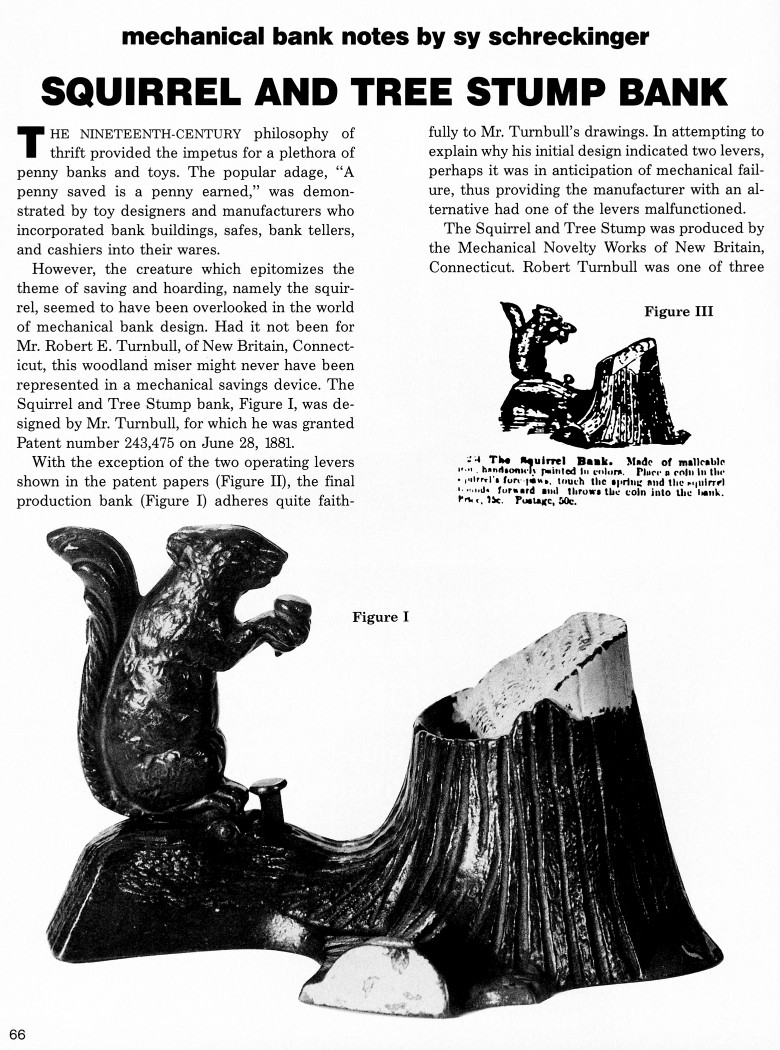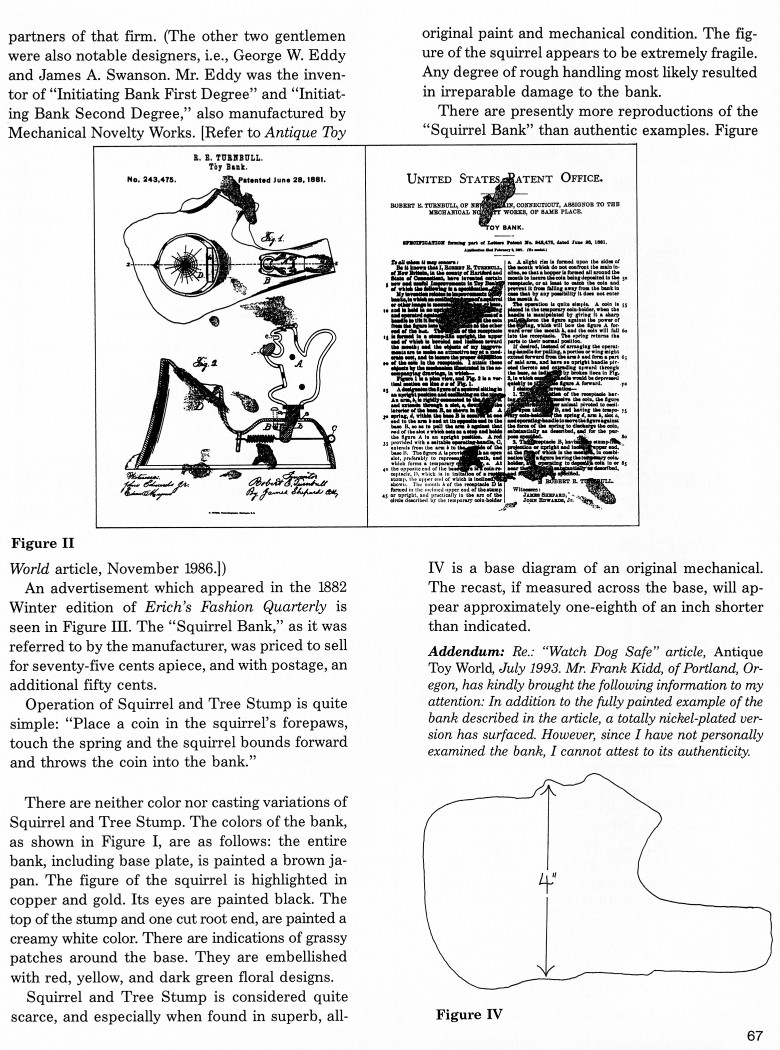|
Squirrel and Tree Stump Bank
by Sy Schreckinger – ANTIQUE TOY WORLD Magazine – September,
1993
The nineteenth-century philosophy of thrift
provided the impetus for a plethora of penny banks and toys. The popular
adage, "A penny saved is a penny earned," was demonstrated by toy
designers and manufacturers who incorporated bank buildings, safes, bank
tellers, and cashiers into their wares.
However, the creature which epitomizes the theme of saving and
hoarding, namely the squirrel, seemed to have been overlooked in the
world of mechanical bank design. Had it not been for Mr. Robert E.
Turnbull, of New Britain, Connecticut, this woodland miser might never
have been represented in a mechanical savings device. The Squirrel and
Tree Stump bank, Figure I, was designed by Mr. Turnbull, for which he was
granted Patent number
243,475 on June 28, 1881.
With the exception of the two operating levers shown in the patent
papers (Figure II), the final production bank (Figure I) adheres quite
faithfully to Mr. Turnbull's drawings. In attempting to explain why his
initial design indicated two levers, perhaps it was in anticipation of
mechanical failure, thus providing the manufacturer with an alternative
had one of the levers malfunctioned.
The Squirrel and Tree Stump was produced by the Mechanical Novelty
Works of New Britain, Connecticut. Robert Turnbull was one of three
partners of that firm. (The other two gentlemen were also notable
designers, i.e., George W. Eddy and James A. Swanson. Mr. Eddy was the
inventor of "Initiating Bank First Degree" and "Initiating Bank Second
Degree," also manufactured by Mechanical Novelty Works. [Refer to Antique
Toy World article, November 1986.]
An advertisement which appeared in the 1882 Winter edition of Erich's
Fashion Quarterly is seen in Figure III. The "Squirrel Bank," as it was
referred to by the manufacturer, was priced to sell for seventy-five cents
apiece, and with postage, an additional fifty cents.
Operation of Squirrel and Tree Stump is quite simple: "Place a coin
in the squirrel's forepaws, touch the spring and the squirrel bounds
forward and throws the coin into the bank."
There are neither color nor casting variations of Squirrel and Tree
Stump. The colors of the bank, as shown in Figure I, are as follows: the
entire bank, including base plate, is painted a brown japan. The figure of
the squirrel is highlighted in copper and gold. Its eyes are painted
black. The top of the stump and one cut root end, are painted a creamy
white color. There are indications of grassy patches around the base. They
are embellished with red, yellow, and dark green floral designs.
Squirrel and Tree Stump is considered quite scarce, and especially
when found in superb, all‑original paint and mechanical condition. The
figure of the squirrel appears to be extremely fragile. Any degree of
rough handling most likely resulted in irreparable damage to the bank.
There are presently more reproductions of the "Squirrel Bank" than
authentic examples. Figure IV is a base diagram of an original mechanical.
The recast, if measured across the base, will appear approximately
one-eighth of an inch shorter than indicated.
Addendum: Re.: "Watch Dog Safe" article, Antique Toy World,
July
1993. Mr. Frank Kidd, of Portland, Oregon, has kindly brought the
following information to my attention: In addition to the fully painted
example of the bank described in the article, a totally nickel-plated
version has surfaced. However, since I have not personally examined the
bank, I cannot attest to its authenticity.
|


